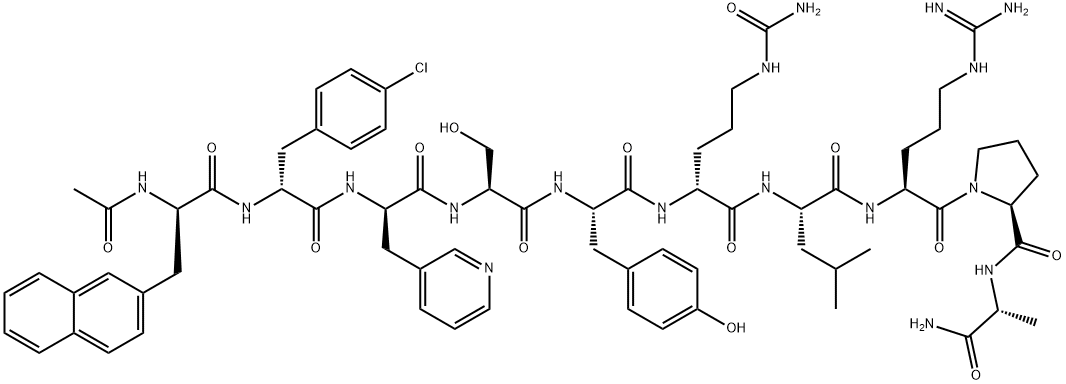Description
Cetrorelix was launched in Germany for the treatment of
female infertility. It is a decapeptidic analog of luteinizing hormone-releasing
hormone (LH-RH) bearing structural modifications in the crucial positions 1, 2, 3,
6 and 10 : [Ac-D-Nal1, D-4-CI Phe-2, D-Pal3, D-Cit6, D-Alal0]-GnRH. Cetrorelix
is an extremely potent and long acting gonadotrophin releasing hormone
(GnRH) antagonist and thus blocks gonadotrophins and sex steroid secretion
immediately after administration. Moreover, it has a low histamine-releasing
potency. Cetrorelix will be the first LH-RH antagonist approved worldwide. In
several Phase III clinical trials, female patients receiving Cetrorelix had a
successful controlled ovulation thus avoiding a premature LH-surge. Cetrorelix
could be a first-choice in-vitro fertilization (IVF) treatment without the
complications of current controlled ovarian hyperstimulation protocols. Cetrorelix
is currently under clinical investigation for the treatment of diverse sex hormone
dependent disorders such as benign prostate hypertrophy, breast, ovarian or
prostate cancers and diverse gynaecological disorders.
Originator
Asta Medica (Germany)
Uses
Cetrorelix Acetate is an gonadotropin-releasing hormone antagonist and is used to treat hormone-sensitive cancers of the prostate and breast.
Definition
ChEBI: A synthetic ten-membered oligopeptide comprising N-acetyl-3-(naphthalen-2-yl)-D-alanyl, 4-chloro-D-phenylalanyl, 3-(pyridin-3-yl)-D-alanyl, L-seryl, L-t
rosyl, N5-carbamoyl-D-ornithyl, L-leucyl, L-arginyl, L-prolyl, and D-alaninamide residues coupled in sequence. A gonadotrophin-releasing hormone (GnRH
antagonist, it is used for treatment of infertility and of hormone-sensitive cancers of the prostate and breast.
brand name
Cetrotide (Serono).




